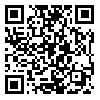جلد 35، شماره 3 - ( 6-1403 )
جلد 35 شماره 3 صفحات 12-1 |
برگشت به فهرست نسخه ها
چکیده: (195 مشاهده)
One method to diagnose retinal diseases is by using the Optical Coherence Tomography (OCT) scans. Annually, it is estimated that around 30 million OCT scans are performed worldwide. However, the process of analyzing and diagnosing OCT scan results by an ophthalmologist requires a long time so machine learning, especially deep learning, can be utilized to shorten the diagnosis process and speed up the treatment process. In this study, several pre-trained deep learning models are compared, including EfficientNet-B0, ResNet-50V2, Inception-V3, and DenseNet-169. These models will be fine-tuned and trained with a dataset containing OCT scanned images to classify four retinal conditions, namely Choroidal Neovascularization (CNV), Diabetic Macular Edema (DME), Drusen, and Normal. The models that have been trained are then tested to classify the test set and the results are evaluated using a confusion matrix in terms of accuracy, recall, precision, and F1-score. The results show that the model with the best classification results in the batch size of 32 scenario is the ResNet-50V2 model with an accuracy value of 98.24%, precision of 98.25%, recall of 98.24%, and F1-score of 98.24%. While for the batch size of 64, the EfficientNet-B0 model is the model with the best classification results with an accuracy value of 96.59%, precision of 96.84%, recall of 96.59%, and F1-score of 96.59%.
نوع مطالعه: پژوهشي |
موضوع مقاله:
و موضوعات مربوط
دریافت: 1402/9/16 | پذیرش: 1403/3/20 | انتشار: 1403/6/19
دریافت: 1402/9/16 | پذیرش: 1403/3/20 | انتشار: 1403/6/19
| بازنشر اطلاعات | |
 | این مقاله تحت شرایط Creative Commons Attribution-NonCommercial 4.0 International License قابل بازنشر است. |

